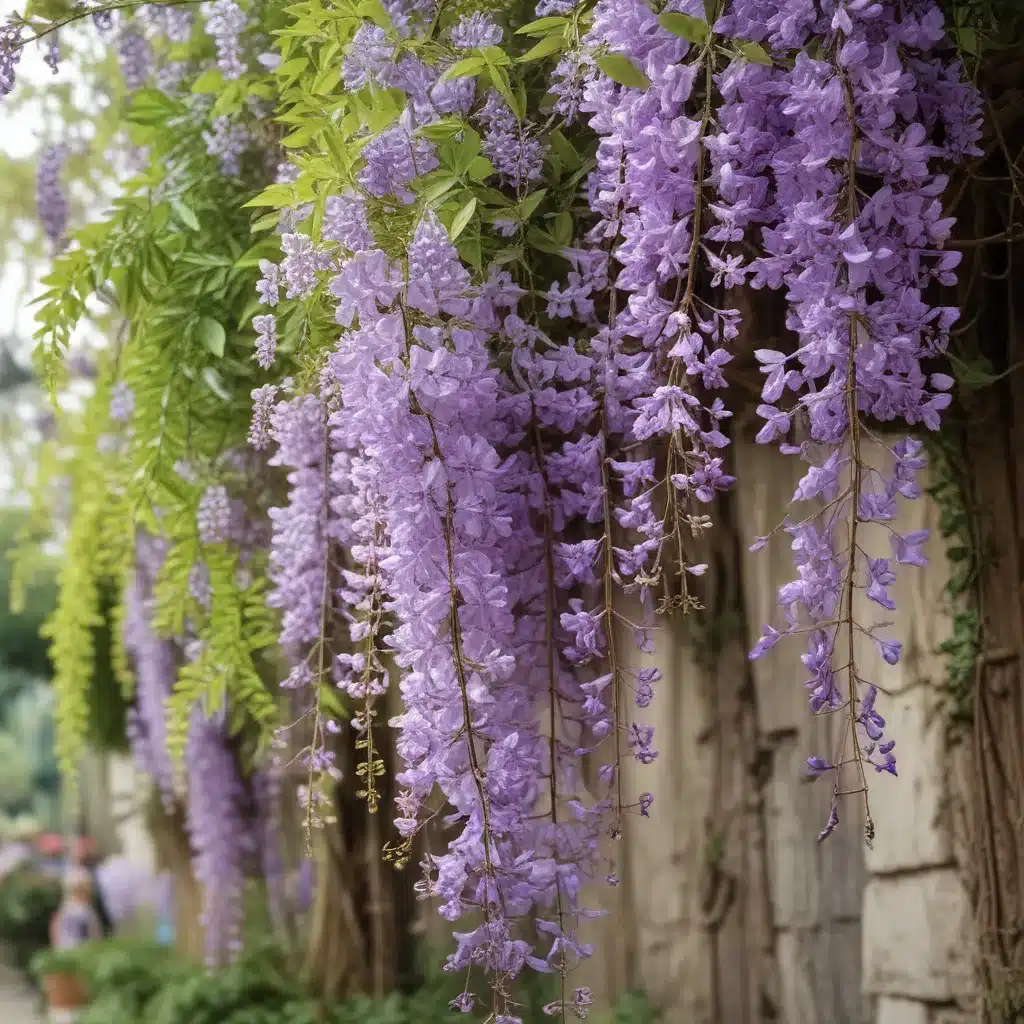
The Wisteria genus is a captivating group of flowering vines that have enchanted gardeners and nature enthusiasts for centuries. Originating from the lush forests of China, these graceful climbers boast cascading clusters of vibrant blooms that evoke a sense of timeless beauty and wonder. As TriCounty Tree Care’s resident horticulture experts, we are delighted to delve into the fascinating world of Wisteria, uncovering its unique characteristics, cultural significance, and the art of cultivating this enchanting plant.
Wisteria Species and Origins
The Wisteria genus is comprised of several distinct species, each with its own unique charm and characteristics. The most widely recognized and cultivated varieties are the Chinese Wisteria (Wisteria sinensis), the Japanese Wisteria (Wisteria floribunda), and the American Wisteria (Wisteria frutescens).
Chinese Wisteria is the most iconic and beloved Wisteria species, native to the lush mountain forests of China. This vigorous vine is renowned for its cascading clusters of fragrant, lavender-blue or white flowers that can reach up to 12 inches in length. The large, pinnately compound leaves provide a rich, verdant backdrop to the stunning blooms.
Japanese Wisteria, as the name suggests, is indigenous to the Japanese archipelago. This variety is slightly more compact than its Chinese counterpart, with smaller, more densely packed flower clusters that can range from lavender to white in color. The foliage is also slightly more delicate in appearance.
American Wisteria, found naturally in the southeastern United States, is a more compact and manageable species compared to its Asian relatives. While the flower clusters are typically shorter, they still captivate with their vibrant purple hues and alluring fragrance.
Wisteria Characteristics
Wisteria’s captivating qualities extend far beyond its stunning blooms. These vines are renowned for their rapid growth, often climbing 10 to 25 feet per year, and their ability to reach impressive heights when provided with suitable support structures.
The flowering habits of Wisteria are a true delight to behold. These plants typically bloom in the spring, with some varieties producing a second, smaller flush of flowers in the late summer or early fall. The pendulous flower clusters, or racemes, can measure up to 12 inches in length and are composed of numerous individual blossoms.
The foliage of Wisteria is equally captivating, with large, pinnately compound leaves that provide a rich, verdant backdrop to the cascading blooms. The leaves can range in color from deep green to vibrant shades of yellow and copper, depending on the season and cultivar.
Wisteria in Horticulture and Landscaping
Wisteria’s enchanting qualities have made it a highly sought-after plant in the world of horticulture and landscape design. Cultivating Wisteria requires careful consideration of its growing requirements and maintenance needs.
When planting Wisteria, it is crucial to select a location that provides ample sunlight, well-drained soil, and sturdy support structures, such as trellises, arbors, or pergolas. Wisteria thrives in USDA hardiness zones 5 through 9, with the ideal growing conditions varying based on the specific species.
Proper care and maintenance are essential for Wisteria’s long-term health and vigor. Regular pruning, both in the summer and winter, is necessary to control the plant’s vigorous growth and encourage the formation of flower buds. Fertilizing Wisteria with a balanced, slow-release formula can also help ensure optimal nutrient availability.
In the realm of landscape design, Wisteria is a versatile and captivating plant. Its cascading blooms make it a stunning choice for covering arbors, trellises, and fences, creating a breathtaking display of color and fragrance. Wisteria can also be trained into espalier forms or incorporated into mixed border plantings, where its lush foliage and vibrant flowers can complement a wide range of companion plants.
Cultural Significance of Wisteria
Wisteria’s captivating beauty and symbolic associations have earned it a prominent place in the cultural traditions of various regions, particularly in Asia.
In Chinese culture, Wisteria is revered as a symbol of love, romance, and longevity. The plant’s ability to thrive and bloom year after year is seen as a metaphor for the enduring nature of emotional bonds. Wisteria is also believed to possess medicinal properties and has been incorporated into traditional Chinese herbal remedies.
The Japanese have long held Wisteria in high regard, incorporating the plant into their iconic garden designs and artistic traditions. Wisteria is often depicted in Japanese woodblock prints, paintings, and poetry, where it is celebrated as a representation of feminine beauty, grace, and sensuality.
Across the globe, Wisteria’s captivating blooms have inspired artists and writers, leaving an indelible mark on the world of creativity. The plant’s cascading flowers have been immortalized in the works of renowned painters, photographers, and poets, who have sought to capture the essence of Wisteria’s allure.
Appreciating Wisteria’s Beauty
Wisteria’s charm extends beyond its cultural significance, as it is truly a marvel to behold in the garden and in the realm of art and photography.
The floral displays of Wisteria are a sight to behold, with their vibrant colors ranging from the iconic lavender-blue to pure white, and even shades of pink and purple. The delicate, fragrant blooms emit a captivating scent that can transport the senses to a realm of tranquility and wonder.
In the world of fine art and photography, Wisteria has long been a subject of fascination. Artists have sought to capture the plant’s ethereal beauty, using techniques such as bold brushstrokes, soft focus, and dramatic lighting to evoke the essence of Wisteria’s allure. Photographers, too, have found endless inspiration in the cascading blooms, crafting breathtaking images that celebrate the plant’s graceful elegance.
Whether admiring Wisteria in the garden, encountering it in a work of art, or simply savoring its enchanting fragrance, this captivating plant continues to captivate and inspire all who encounter its timeless charm.


